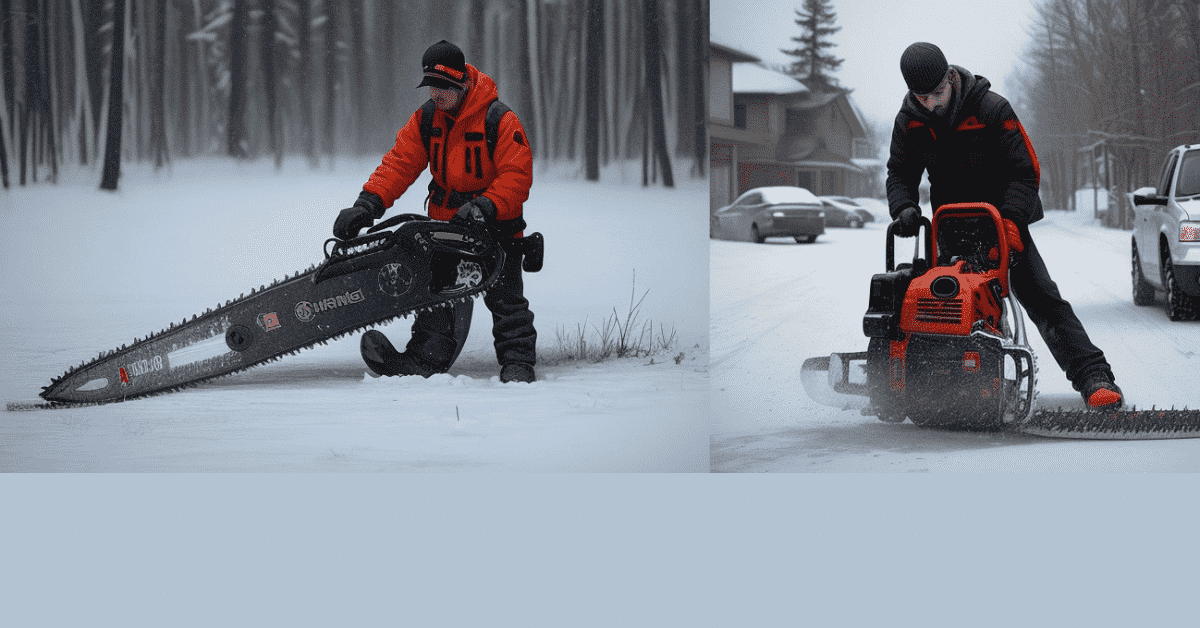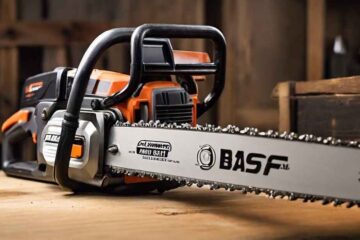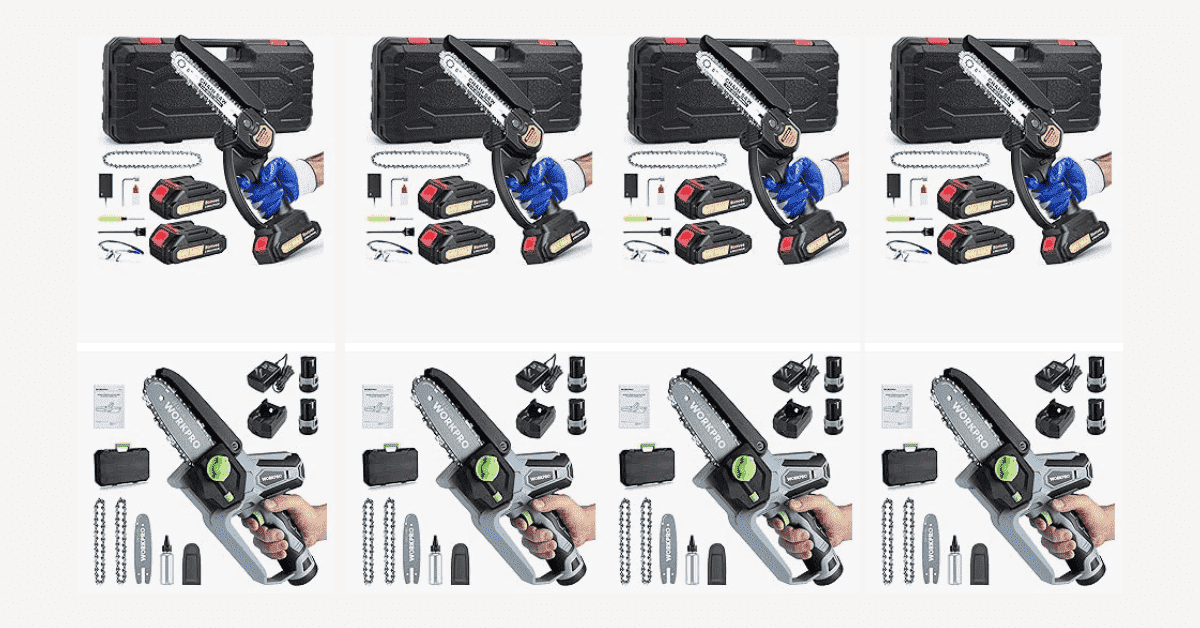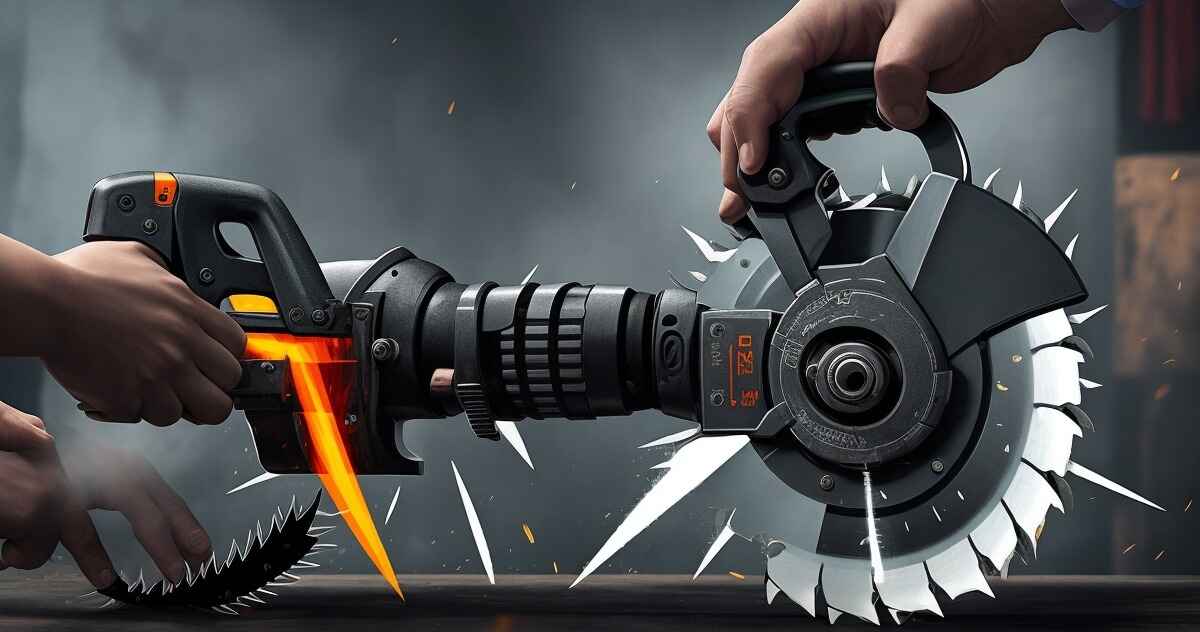If you own a chainsaw, whether for professional use or for occasional home use. you should learn how to winterize a chainsaw. Winterizing your chainsaw entails taking specific steps to ensure it is in good shape and ready for use when spring arrives. In this article, we’ll discuss winterizing a chainsaw. including how to winterize a Stihl chainsaw.
What is Winterizing a Chainsaw?
Winterizing a chainsaw is a process of preparing it for storage during the winter season. This process is essential to saving your tool from damage, the effects of cold, moisture, and inactivity.
Why is it Important to Winterize Your Chainsaw?
Winterizing your chainsaw is important for several reasons:
- Prevents Fuel Issues: Chainsaws use a gasoline and oil mixture as fuel. In winter, if you leave fuel in the chainsaw, it can become old and gunk. Clogged engines are hard to start. Run the engine until the fuel tank is empty.
- Avoids Cold-Weather Start Problems: Cold temperatures can make it harder for a chainsaw engine to start. Winterize the chainsaw. It helps you reduce the risk of fuel-related issues and ensure that it starts when you need it in cold weather.
- Prevents Corrosion: Moisture and humidity can lead to corrosion on metal parts of the chainsaw. such as the chain, bar, and internal components. Adding oil to the cylinder and properly storing the chainsaw helps prevent corrosion during the winter months.
- Extends Equipment Lifespan: Proper maintenance and winterization increase the lifespan of your chainsaw. Regularly cleaning, sharpening, and oiling the chain and components. Also storing them in a dry, protected place, can prevent premature wear and damage.
- Avoids costly repairs: Not winterizing can damage carburetors, fuel systems, and corrosion. Which may need costly repairs or replacements. Preventing these problems through winterization saves you money in the long run.
- Ensures Safety: A well-maintained and properly winterized chainsaw is safer to use. It’s less likely to experience unexpected issues during operation, reducing the risk of accidents and injuries.
- Saves Time and Frustration: When you’re ready to use your chainsaw in the spring. Make sure you have winterized, which means you won’t have to deal with starting difficulties, fuel system cleaning, or repairs. This saves you time and frustration, allowing you to get to work more quickly.
When Should You Winterize Your Chainsaw?
You must winterize your chainsaw if you anticipate not using it for an extended period of time. Usually, this entails getting it ready for winter storage. The following steps will make sure it is in top shape when you need it again, whether you intend to store it for a few weeks or months.
Steps on How to Winterize a Chainsaw
Step 1: Empty the Gas Tank:
Begin by running the chainsaw until the fuel tank is nearly empty. This prevents stale fuel from clogging the carburetor. Dispose of any remaining fuel following local regulations.
Step 2: Remove the Chain and Bar:
Take off the chain and bar from the chainsaw. It simplifies the cleaning process and prevents oil or debris buildup in these critical components.
Step 3: Clean the Chainsaw:
Use a brush and soapy water to clean all parts of the chainsaw meticulously. keep close attention to the chain, bar, housing, and sprocket, and take care of them. Thorough cleaning removes dirt, oil, and sawdust residue.
Step 4: Inspect the Chainsaw:
While you’re in the cleaning process. Make sure to thoroughly examine the chainsaw for potential damage. like cracks in the housing or any loose nuts and bolts. Before storing it away, address any problems you come across to prevent them from becoming more serious over time.
Step 5: Lubricate the Chainsaw:
Apply a dedicated chainsaw lubricant to the chain, bar, and sprocket. Specialized lubricants stick better and prevent rust and wear.
Step 6: Store the Chainsaw in a Dry, Cool Place:
When putting away your chainsaw, choose a dry, cool spot like a garage or shed. Avoid areas with direct sunlight or excess humidity, as they can harm the chainsaw over time. For extended storage, consider using a tarp or a storage bag to shield it from dust and dirt.
Additional Tips:
- Fuel Stabilizer for Two-Stroke Chainsaws: If you own a two-stroke chainsaw, mix a fuel stabilizer with the gas before emptying the tank. This preventive measure prevents fuel degradation during storage.
- Oil Change for Four-Stroke Chainsaws: Change the oil before storing the chainsaw. This extra step is helpful in protecting the engine from corrosion.
FAQ:
Q1: How to winterize a Stihl chainsaw properly?
Winterizing a Stihl chainsaw is quite like winterizing any other chainsaw. You should start by emptying the gas tank and taking off the chain and bar. Then give it a good cleaning and inspection, apply lubrication, and finally, store it in a cool, dry location. These steps are essential to safeguarding your Stihl chainsaw during the winter season.
Q2: How often should I perform winterization maintenance on my chainsaw?
Whenever you won’t be using the chainsaw for an extended period, winterize it. Most users prepare it for winter storage. Your chainsaw will remain in good condition if you winterize it regularly.
Q3: Can I use regular motor oil for lubricating my chainsaw during winterization?
It’s best to use a chainsaw-specific lubricant. These lubricants offer superior wear and rust resistance even when inactive. Using regular motor oil may not provide the same level of protection.
Q4: What should I do if I accidentally left fuel in the chainsaw’s tank before winterization?
If you left fuel in the tank, it’s important to remove it or use a fuel stabilizer. Stale fuel can cause carburetor problems and engine damage. Consider draining the tank and running the chainsaw until it’s out of fuel. Alternatively, use a fuel stabilizer to prevent fuel degradation.
Q5: Can I use water-based cleaners for cleaning my chainsaw during winterization?
While water-based cleaners are effective for general cleaning. Also, it’s crucial to ensure that all parts are thoroughly dried after cleaning to prevent rust. Using a chainsaw cleaner or a mixture of warm, soapy water is ideal. because it can effectively remove oil, dirt, and sawdust without excessive moisture.
Q6: Is it necessary to remove the chain and bar during winterization if they are not visibly dirty?
Yes, this is an ideal decision to remove the chain and bar, even if it looks like clean. This helps prevent oil or debris buildup in these critical components during storage. And also ensuring your chainsaw remains in top condition.
Conclusion
In conclusion, you must know how to winterize a chainsaw. including a Stihl chainsaw, which is essential for its longevity and performance. By following the outlined steps, you can prevent fuel issues, avoid cold-weather start problems. and it helps to extend the equipment’s lifespan. Regular winterization ensures safe, efficient operation and saves time and frustration.




